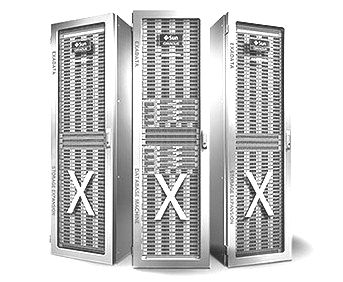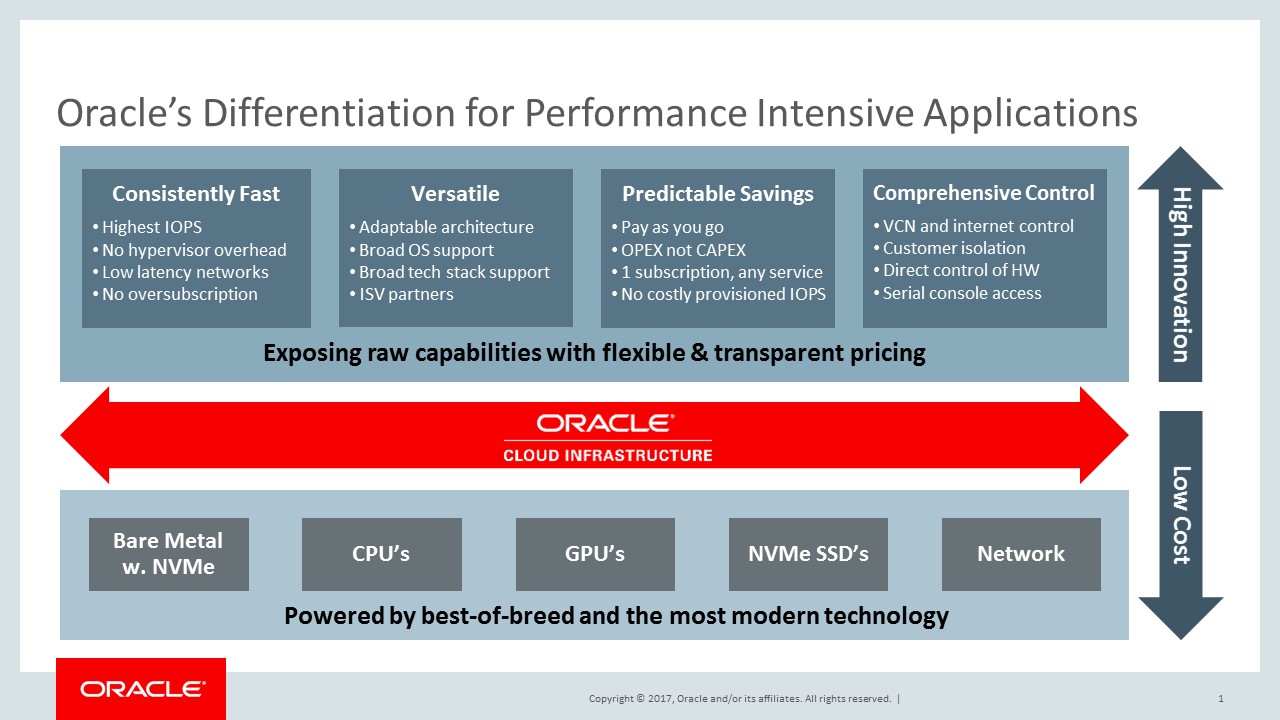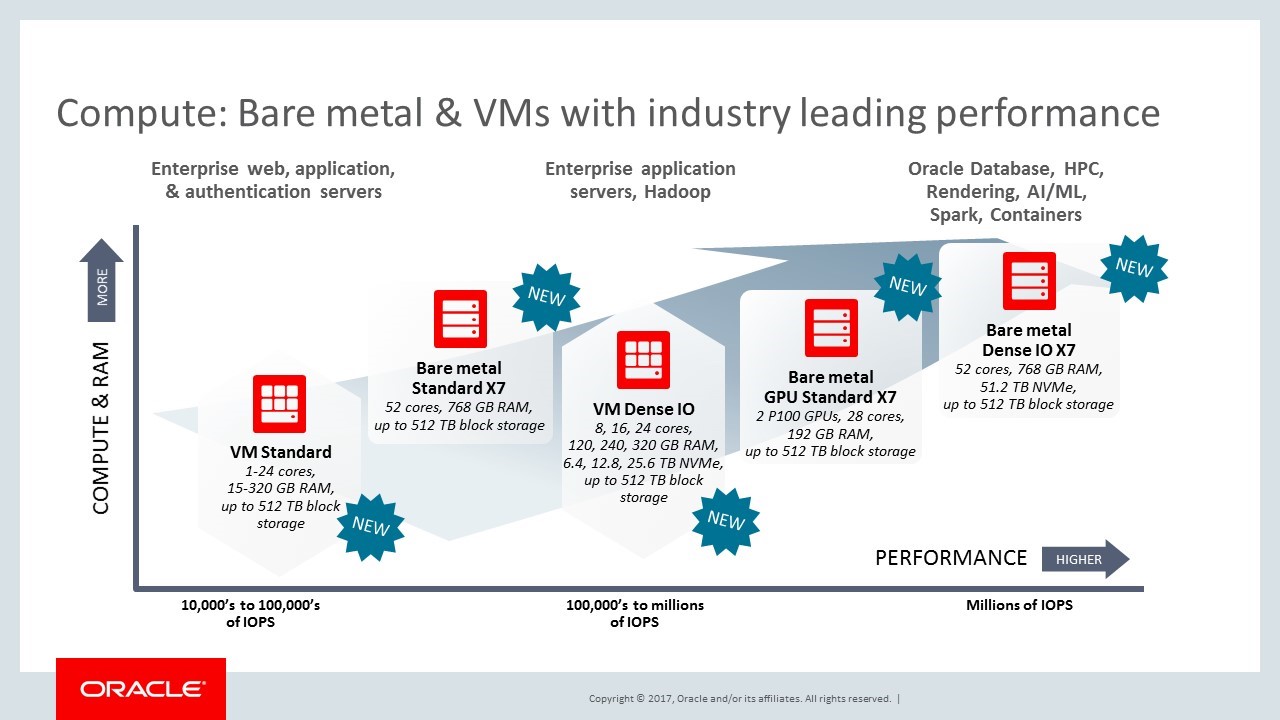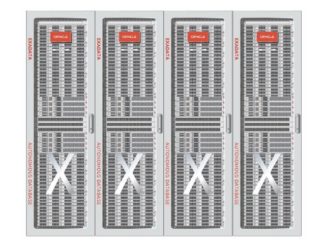
Oracle was late to the cloud game, but in recent years has moved aggressively to catch up. While still behind the top companies like Amazon Web Services, Microsoft Azure, and Google Cloud Platform, Oracle is seeing gains in revenue and customers to its cloud environment, thanks in large part due to the hundreds of thousands of enterprise customers that use its various operating system, middleware, database, and application software.
The cloud revenue jump at Oracle is pretty steep. In a conference call discussing the most recent quarterly financial numbers, Oracle co-CEO Safra Catz noted that cloud revenue for the quarter jumped 51 percent year-over-year, hitting $1.5 billion, while co-CEO Mark Hurd said the company is taking share in the highly competitive market, pointing out that the apps marketplace is growing in low single digits.
“There is no question that when you can come out with references like we have publicly with Bank of America, AT&T, and others, it makes the next opportunity easy when you can reference customers at that level,” Hurd said. “This sort of every aspect of selling in the cloud, I think that the company holistically is getting better at. We are better, our products are better, our sales force is better, our ability to implement is better, our ability to do all of these things is just continuing to improve quarter by quarter by quarter and manifest itself in the type of results we are talking about.”
The company also growing its cloud business by offering strong compute and storage options that enable enterprises to more easily and efficiently run HPC applications and emerging workloads like data analytics and machine learning, according to Leo Leung, director of product and strategy for Oracle Cloud Infrastructure. This month, the company introduced new compute options for its Oracle Cloud Infrastructure that include enhanced virtual machine and bare metal compute as well as new bare metal instances that leverage Nvidia Tesla GPU accelerators. The Oracle cloud gives enterprises an option to consider when looking to address the modern workloads that are coming into their datacenters, Leung told The Next Platform.
“One of the big things about having these types of compute in the cloud is that for smaller businesses or businesses that are spinning up these types of capabilities in their own environment, it’s a better situation putting the workloads into the cloud rather than buying their own equipment on-premises,” he said.
We’ve talked a lot about efforts by Dell EMC, Lenovo, IBM, Hewlett Packard Enterprise, and other vendors to bring HPC capabilities that traditionally have been available to research and education institutions and big corporations to enterprises that are trying to manage their modern workloads and adapt to such changes as cloud computing, mobility and computing at the network edge. That has included such moves as Dell EMC’s new bundled offerings introduced this month at the SC17 supercomputing conference, IBM integrating its PowerAI deep learning software with its Data Science Experience, and Lenovo buying IBM’s X86-based System x business three years ago and licensing software like Platform Computing’s middleware stack.
Oracle at OpenWorld last month unveiled the Exadata X7 engineered system, which is available in the cloud or on-premises, as well as a native container development platform and new services around such technologies as AI and blockchains, all of which are designed to make it easier for enterprises to develop and run modern workloads in the cloud. Oracle’s strategy also includes offering a wide range of compute and storage options within its cloud infrastructure and ensuring not only high performance but also high efficiently, Leung said.
All of the new compute instances in the Oracle Cloud Infrastructure introduced this month are based on the vendors recently announced X7 hardware and are powered by Intel’s 14 nanometer “Skylake” Xeon SP chips. At the same time, Oracle is running accelerated bare metal shapes with Nvidia’s Tesla P100 accelerators that are based on the GPU maker’s “Pascal” architecture. The bare metal offerings provide 28 cores, dual 25 Gb/sec network interfaces that enable high bandwidth, and more than 18 TFLOPs of single-precision performance per instance. The accelerated instances are aimed at compute-intensive workloads like AI and deep learning.
Early next year, Oracle will offer VM and bare metal instances powered by eight of Nvidia’s V100 GPUs based on the “Volta” architecture that will include Nvidia’s NVLink interconnect technology, all of which will generate more than 125 TFLOPs of single precision performance. There also will be pre-configured images that will make deployment faster. The new standard VM shape is now available in one through 24 cores, and the bare metal standard shape offers 52 cores. Oracle’s Dense I/O shapes, aimed at HPC, database and big data workloads, are available in both VM and bare metal instances.
The vendor also is putting a focus on storage with the instances supporting NVM-Express solid-state drives (SSDs) that enable faster access to stored data, Leung said. The VM and bare metal instances support up to 512 TB of NVM-Express SSD remote block volume, while the bare metal Dense I/O shape includes 51 TB of local NVM-Express SSD storage. The company is touting that its cloud infrastructure provides 1,214 percent better storage performance than competitive offerings at 88 percent lower cost per I/O.
On the management side, Oracle is offering a Terraform provider, which will enable customers to deploy single or multiple compute instances for cluster with a single click. There also is a Terraform-based Kubernetes installer to help deploy and orchestrate containerized applications.







Be the first to comment